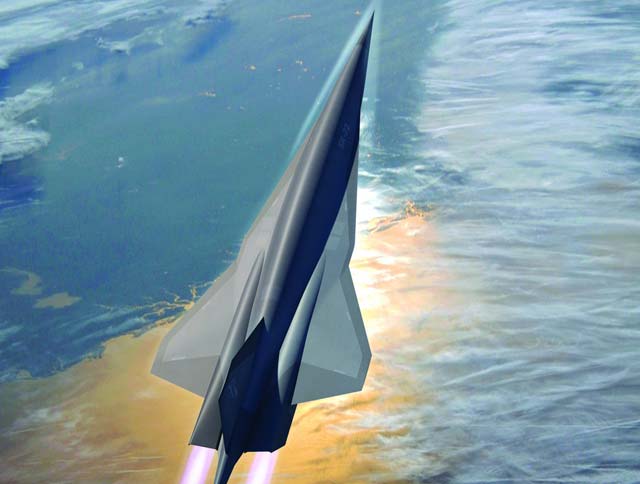Lockheed Martin’s Skunk Works is proposing to develop a new aircraft for intelligence, surveillance and reconnaissance (ISR) missions that is capable of Mach 6.0 flight, or nearly twice the top speed of the long-retired SR-71 Blackbird.
The newly-branded SR-72 unmanned aircraft would take advantage of a possible new breakthroughs in hypersonic propulsion technology that may solve the decades-old puzzle of how to accelerate from M0.0 to M6.0 using the same propulsion system, Brad Leland, Skunk Works’ programme manager for hypersonics, tells Flightglobal in an interview.
“Adversaries are working on ways of countering stealth,” Leland says. “This is the counter to counter stealth. This is the way because when you come in both high and fast it’s all but impossible for our adversaries to intercept a vehicle or a missile like this. The time it takes to detect – and then try to intercept – we’ve gone by.”
The problem with hypersonic propulsion has always been a gap between the highest speed capability of a turbojet and the lowest speed of a ramjet.
Most ramjets are not capable of operating at speeds below M4.0. A turbojet engine, meanwhile, is only capable of providing power at speeds up to M2.2.
The question is “how do you make Mach 3 work”?, Leland says.

Lockheed Martin
The SR-71 was able to reach M3.2 because of the special design of the Pratt & Whitney J58 engine. Beyond M2.5, the engine essentially converted into a low-speed ramjet by bypassing the airflow around the core and into the afterburner.
In the last decade, the Defense Advanced Research Projects Agency and Lockheed working on a project called HTV-3X that developed a ramjet that could operate at speeds below M3.0, Leland says.
Meanwhile, the Air Force Research Laboratory was working on a project to make a small turbine engine accelerate beyond the M2.2 barrier. That project, however, was not successful, Leland says.
As a result, Lockheed and Aerojet Rocketdyne developed a proprietary method to use an off the shelf F100 or F110 fighter engine, and accelerate it for short periods beyond M2.2, he says.
Leland declines to specify the speed at which the ramjet engine takes over, but he acknowledges the ramjet is activated below the M3.0 threshold demonstrated under the HTV-3X programme.
Lockheed and Aerojet Rocketdyne have now taken the concept as far as they can afford after a series of component-level demonstrations.
“We’ve proven each piece on the component level,” he says. “We need to move forward to large-scale demonstrations.”

Lockheed Martin
The US Air Force has a hypersonics roadmap that envisions fielding a hypersonic strike weapon, to succeed the X-51 Waverider proof-of-concept demonstration. The roadmap envisions a follow-on programme calling for a reusable unmanned aircraft with M6.0 speeds.
So far, there has only been discussions with government officials but no commitments on funding a full-scale demonstration programme for the high-speed turbine engine or the combined cycle engine with the ramjet.
Leland says that Lockheed’s emphasis has been on developing an affordable means to achieve hypersonic propulsion.
A hypersonic missile “must be price competitive with a conventional subsonic missile, or it would only be a silver bullet,” he says. “We need something that will be mass-produced and flood the battlefield, and when you do that that’s really a game-changer.”
Source: FlightGlobal.com













































